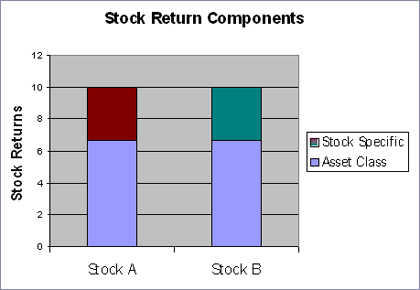Diversification Its All About (Asset) Class
Post on: 2 Май, 2015 No Comment

Effective asset allocation requires variety and balance within each asset class.
To diversify, you spread the investment dollars you allocate to each asset class among a number of securities in that class. Rather than buying just one or two stocks, for example, you invest in companies in different industries or sectors and with different market capitalizations.
Those groups or units within an asset class—which share basic characteristics but also have some noticeable differences — are often identified as subclasses. For example, both small-cap and large-cap stocks are equities, but small-cap companies, as a group, tend to be more volatile than large-caps and have stronger growth potential. Large-caps, on the other hand, are more likely to pay dividends and have the resources to ride out a market downturn.
Why You Diversify
There are two main reasons for diversifying your investment portfolio:
- To take maximum advantage of market conditions
- To protect yourself against downturns
Asset subclasses, like the major asset classes of which they’re a part, tend to provide stronger or weaker performances at different times in an economic cycle. So if you invest in a number of subclasses as part of a diversification strategy, you’ll be in a position to benefit as a particular subclass outpaces the market in any given period. For example, if you own both short- and long-term bonds, you’ll be in a position to profit whether interest rates are rising or falling.
Diversification may also help you meet your investment goals because it lets you offset the risks to which any single investment, or any narrowly focused group of investments, may expose you. That way, diversification can help protect you against non-systematic risk. such as the problems caused by poor management or the impact of new technology. But, of course, it doesn’t guarantee a profit.
In contrast, asset allocation helps combat systematic risk. such as a falling equity market that pulls all stock prices down with it.
A Word of Caution
In the quest for diversification, it’s possible to spread your investments too widely or to accumulate a random rather than focused collection of holdings if you don’t take a strategic approach to investing. When your portfolio is spread too thin, your returns can actually be lower. And there’s a tipping point at which it becomes difficult to track the sheer number of investments in your portfolio. That makes it almost impossible to keep your holdings in balance and your plans on track.
Alternative Diversification

Tangible or hard assets, such as real estate, leased equipment, and energy resources, have received increasing attention over the past few years as tools in the diversification kit. That’s because returns on hard assets tend to be non-correlated to the returns on publicly traded securities. What’s more, there’s enough variety within this class to create a combination of investments that may be negatively correlated as well.
Here’s the Rub
Diversification is key to a strong investment portfolio. Yet diversification requires enough capital to buy broadly, and enough information about the securities you’re considering to invest wisely. What’s more, quantity isn’t a guarantee of diversification. You have to judge each investment not only on its own merits, but also in relation to the rest of your portfolio to achieve the balance you’re looking for.
To get the most effective mix, you want to choose asset subclasses with low to negative correlations. For example, some industries, such as airlines, automobiles, and travel, tend to prosper in a strong economy. These are cyclical industries, moving in tandem with the market.
Other industries, such as food, gas, and electricity, tend to remain stable regardless of market conditions. These are noncyclical industries. Not surprisingly, cyclical securities tend to have low correlations to countercyclical securities. So a portfolio that contains both recognizes the importance of diversification.
A Portfolio Test
As part of a regular review, you and your adviser will want to evaluate how diversified your portfolio really is. For example, your stock portfolio may not be adequately diversified if you own shares in just five or six companies, only companies that have similar market capitalizations, or only those that belong to a single industry.
Your fixed-income portfolio isn’t diversified if you own only municipal bonds issued by the state where you live.
Increasingly, real diversification calls for international investments. Because world economies remain distinct, putting money into overseas markets can be a good way to balance investments at home.
Mutual funds, provided they are not too narrowly focused, and exchange traded funds (ETFs) can provide a ready-made solution to diversification. All mutual funds own a number of investments, and some funds spread their holdings broadly within their chosen asset class or subclass. If you own several funds with similar investments, you may be less diversified than you might think. That’s why it’s always important to review the investment portfolios of the funds you own or are considering buying.
Finally, your adviser should tell you how well each investment is doing and what portion of your portfolio it makes up before you add to or change your investment lineup.














